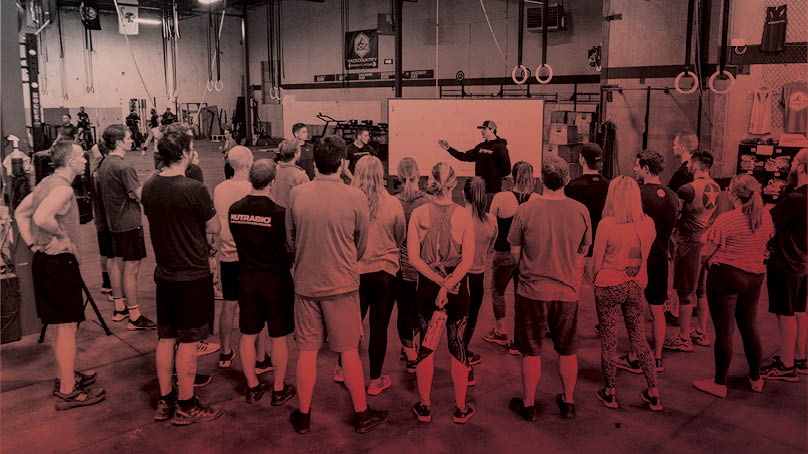High-Intensity Interval Training (HIIT) has gained immense popularity in the fitness world due to its effectiveness and time efficiency. This article will delve into the science behind HIIT, exploring its benefits, mechanisms, and how it compares to other forms of exercise and also discover seo for fitness websites.
Table of Contents
- The Definition of High-Intensity Interval Training
- The Physiology of HIIT
- Benefits of High-Intensity Interval Training
- The Role of Intensity and Duration in HIIT
- The EPOC Effect and Calorie Burn
- HIIT for Weight Loss
- HIIT and Muscle Building
- Safety Considerations for HIIT
- Incorporating HIIT into Your Fitness Routine
- HIIT for Different Fitness Levels
- Combining HIIT with Other Forms of Exercise
- Conclusion
The Definition of High-Intensity Interval Training
High-Intensity Interval Training (HIIT) is a form of cardiovascular exercise that alternates short bursts of intense exercise with periods of active recovery or rest. It involves pushing your body to its maximum capacity during the intense intervals, followed by a period of lower-intensity exercise or rest.
The Physiology of HIIT
During HIIT, the body experiences various physiological adaptations. The intense intervals stimulate the cardiovascular system, increasing heart rate and breathing rate. This leads to improved oxygen delivery to the muscles and increased metabolic demands. HIIT also triggers the release of hormones, such as adrenaline and growth hormone, which play a role in fat metabolism and muscle growth.
Benefits of High-Intensity Interval Training
HIIT offers numerous benefits for both cardiovascular health and overall fitness. Some of the key benefits include:
- Improved cardiovascular endurance
- Enhanced fat burning
- Increased anaerobic and aerobic fitness
- Time efficiency
- Metabolic rate elevation
- Preservation of muscle mass
- Variety in workout routines

The Role of Intensity and Duration in HIIT
The intensity and duration of the intense intervals in HIIT are crucial factors for its effectiveness. The intervals should be performed at a high intensity, close to your maximum effort, to elicit the desired physiological response. The duration of the intervals typically ranges from 20 to 60 seconds, followed by a period of active recovery or rest.
The EPOC Effect and Calorie Burn
One of the significant advantages of HIIT is the EPOC effect. After a HIIT workout, the body continues to burn calories at an elevated rate due to increased oxygen consumption. This means that even after you’ve finished your workout, your body keeps burning calories to restore itself to its pre-exercise state, resulting in greater overall calorie burn compared to steady-state exercise.
HIIT for Weight Loss
High-Intensity Interval Training is highly effective for weight loss. The combination of intense exercise and the EPOC effect leads to increased calorie burn and fat oxidation. Additionally, HIIT helps preserve muscle mass, which is crucial for maintaining a healthy metabolism. The short duration of HIIT workouts makes it easier to fit into a busy schedule, making it a practical option for those aiming to shed excess weight.
HIIT and Muscle Building
While HIIT primarily focuses on cardiovascular fitness, it can also contribute to muscle building. The intense intervals in HIIT activate fast-twitch muscle fibers, which are responsible for strength and power. Over time, this can lead to improvements in muscle tone and definition. However, it’s important to note that HIIT alone may not be sufficient for significant muscle gains, and it’s often recommended to combine it with resistance training for optimal results.
Safety Considerations for HIIT
Although HIIT offers numerous benefits, it’s important to approach it with caution, especially if you’re new to exercise or have underlying health conditions. HIIT places a significant demand on the cardiovascular system and joints, so it’s essential to start gradually and progress at a pace that suits your fitness level. Consulting with a healthcare professional or certified fitness trainer can help you determine if HIIT is suitable for you and ensure proper technique and safety during workouts.
Incorporating HIIT into Your Fitness Routine
Adding HIIT to your fitness routine can be an excellent way to enhance your overall fitness. It can be performed using various exercises, such as running, cycling, bodyweight exercises, or even swimming. The key is to alternate between intense bursts of effort and active recovery or rest. Start with shorter intervals and gradually increase the intensity and duration as your fitness improves. Aim to include HIIT workouts 2-3 times per week for optimal results.
HIIT for Different Fitness Levels
HIIT can be adapted to accommodate different fitness levels. Beginners can start with longer rest periods or lower-intensity intervals and gradually increase the intensity as they become fitter. Intermediate and advanced individuals can push themselves with shorter rest periods and higher-intensity intervals. The key is to listen to your body, challenge yourself, and gradually progress to prevent injury and ensure continued improvements.
Combining HIIT with Other Forms of Exercise
To maximize your overall fitness, consider combining HIIT with other forms of exercise. Strength training, flexibility exercises, and low-impact activities like yoga or Pilates can complement the cardiovascular benefits of HIIT. This holistic approach ensures balanced fitness development, reduces the risk of overuse injuries, and keeps your workouts varied and exciting.
Conclusion
High-Intensity Interval Training (HIIT) is a scientifically backed and time-efficient method of exercise that offers a plethora of benefits. By alternating between intense bursts of exercise and recovery periods, HIIT improves cardiovascular endurance, promotes fat burning, increases aerobic capacity, and can contribute to muscle building. Its effectiveness lies in the physiological adaptations it induces, such as elevated metabolism and the EPOC effect.
When incorporating HIIT into your fitness routine, it’s crucial to consider your fitness level and gradually progress to avoid overexertion or injury. Safety should always be a priority, and consulting with a healthcare professional or fitness expert can provide valuable guidance.
In conclusion, the science behind High-Intensity Interval Training reveals its effectiveness and efficiency in improving cardiovascular health, enhancing fat loss, and boosting overall fitness. With proper planning, progression, and safety considerations, HIIT can be a valuable addition to your fitness routine, helping you achieve your goals and lead a healthier lifestyle.

FAQs (Frequently Asked Questions)
1. Can anyone do High-Intensity Interval Training (HIIT)?
HIIT can be performed by individuals of various fitness levels. However, if you have any underlying health conditions or are new to exercise, it’s advisable to consult with a healthcare professional or fitness expert before starting HIIT.
2. How often should I do HIIT workouts?
Including HIIT workouts 2-3 times per week can yield significant benefits. It’s important to allow for adequate rest and recovery between sessions to prevent overexertion and ensure proper muscle repair.
3. Can HIIT help with weight loss?
Yes, HIIT is highly effective for weight loss. Its combination of intense exercise, increased calorie burn, and fat oxidation makes it a valuable tool for achieving weight loss goals.
4. Can HIIT be modified for beginners?
Absolutely! Beginners can start with longer rest periods, lower-intensity intervals, and simpler exercises. Gradually increasing the intensity and duration as fitness improves is key to progress safely.
5. Is HIIT suitable for older adults?
HIIT can be adapted to suit older adults’ needs and capabilities. It’s advisable to consult with a healthcare professional or certified trainer to tailor the workout to individual requirements and ensure safety.


